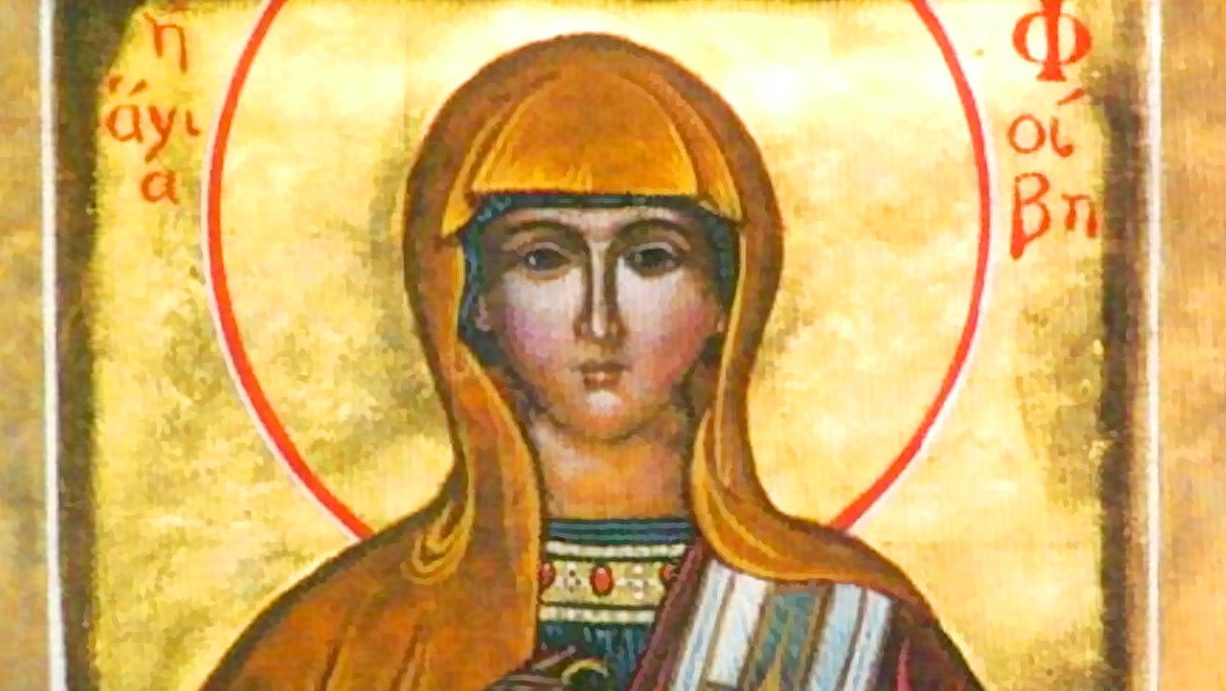

Deacon-structing the Diaconate | Part 4: Women
Deacon Pedro
Sunday, July 16, 2017
Last time we looked at a little bit of the tradition of deacons in the Catholic Church. Deacons go way back and there is a consistent presence of deacons and the diaconate in many Church documents and writings up until the 3rd century. We also saw that the diaconate as a permanent order was brought back with the Second Vatican Council. But everyone is now talking about Women Deacons. There are also many documents that refer to women deacons or deaconesses.
Phoebe
Let’s look at those, beginning with the most obvious one from Paul’s letter to the Romans: “I commend to you our sister Phoebe, a deacon of the church at Cenchreae...” (Rom 16:1) Note that she is referred to as a “deacon” (male form) and not a “deaconess”. In some translations you may find her described as a “servant” and in others as a “minister”. (I only found one translation that referred to her as a deaconess.) Was Phoebe an ordained deacon? Was she a servant (remember that the word servant in Greek is diaconos)? In Greek, Paul calls her a diákonon. Does Paul mean “servant”; does he mean “Ordained deacon”? No one knows. A less obvious passage that is sometimes recognized as referring to women deacons is 1 Timothy 3:8-11:“Deacons likewise must be men of dignity, not double-tongued, or addicted to much wine or fond of sordid gain, but holding to the mystery of the faith with a clear conscience. These men must also first be tested; then let them serve as deacons if they are beyond reproach. Women must likewise be dignified, not malicious gossips, but temperate, faithful in all things.”

Image: St. Phoebe Orthodox Icon
The Eastern Church
There are dozens of references to women deacons (or at least that title) in the Eastern Church. Among the most notable ones are four letters John Chrysosthom wrote to the "woman deacon Amproukla in Constaninople. "Also, Severus, Bishop of Antioch wrote at least four letters to the "woman deacon Anastasia"; and Theodoret of Cyrrhus wrote to the "woman deacon Celerina in Constaninople." All these letters exist to this day. There are also substantial records to indicate that a woman by the name of Olympias was ordained a deacon by Bishop Nectarius in Constantinople, in 385. Her husband had died and she had decided to never remarry. These are just a few. There are many more texts from the Eastern Church that point to the fact that there were women referred to as "deacons". By the 11th century, however, women deacons were no longer ordained in the Eastern Church (except in the Armenian Church, which still today has women deacons. They are very similar to women religious or consecrated women in the Latin Church. They are part of what is referred to as "women monastics". I've even seen them described as "nun-deaconesses"). Except for the 16th chapter of the Didascalia Apostolorum (ca. 250 AD) which specifically mentions the "appointment of deacons and deaconsesses" (more on this references later), references to women deacons in the Western Church have more to do with suppressing them than recording they existed. The First Council of Orange in 441 noted, “Women deacons are by no means to be ordained. If there are any who have already been ordained, let them submit their heads to the benediction that is granted to the people.” Was the Council referring to women deacons in the West or women deacons from the Eastern Church? Were they saying "we should no longer ordain them" or "we shouldn't do what the Church of the East is doing"? The Council of Nimes in 394 seemed concerned about deacons and priests coming from the “far eastern parts”.Widows
There is another theory that argues that women in the West who played the role of deacons were called “widows”. Widows were an order of women in the early Church who had their own distinctive vestments, vows and role in the liturgy. As far as I can tell, all references to these women (or really any women orders in the early Church) required that they be single (or widowed) and celibate. It sounds like they were consecrated virgins or something similar. The Didascalia (mentioned above) gives specific instructions regarding Widows, which leads one to conclude that they were not the same as deaconesses. Come back next week and we can look at more examples of women in diaconal roles and even ordination of women deacons in the history of the Church.To read all about the Sacraments, you don't need to go further than this blog site: Sacraments Part 1 and Part 2. Part 3 Baptism: Part 1, Part 2 and Part 3. Reconciliation Part 1, Part 2 and Part 3 Eucharist: Part 1, Part 2, Part 3 and Part 4. Confirmation: Part 1, Part 2, Part 3, Part 4 and Part 5. Marriage: Part 1, Part 2, Part 3, Part 4, Part 5, Part 6, Part 7, Part 8, Part 9 and Part 10. Ordination: Part 1, Part 2. Anointing of the Sick: Part 1, Part 2, Part 3

Every week, Deacon Pedro takes a particular topic apart, not so much to explore or explain the subject to its fullness, but rather to provide insights that will deepen our understanding of the subject. And don’t worry, at the end of the day he always puts the pieces back together. There are no limits to deaconstructing: Write to him and ask any questions about the faith or Church teaching: [email protected]
Related Articles:
<<













